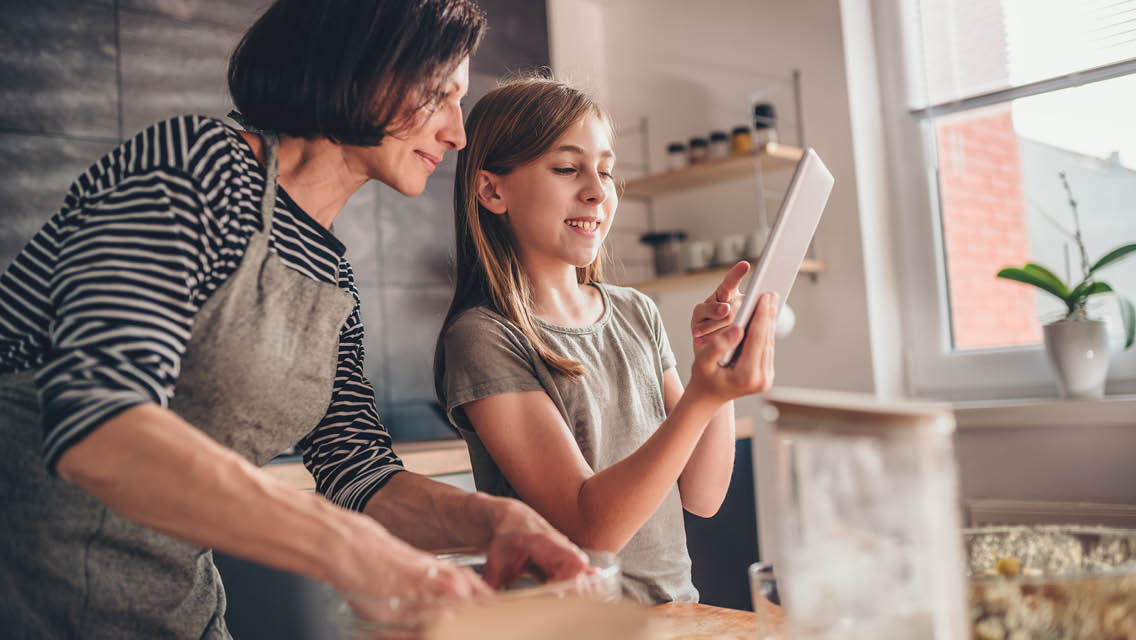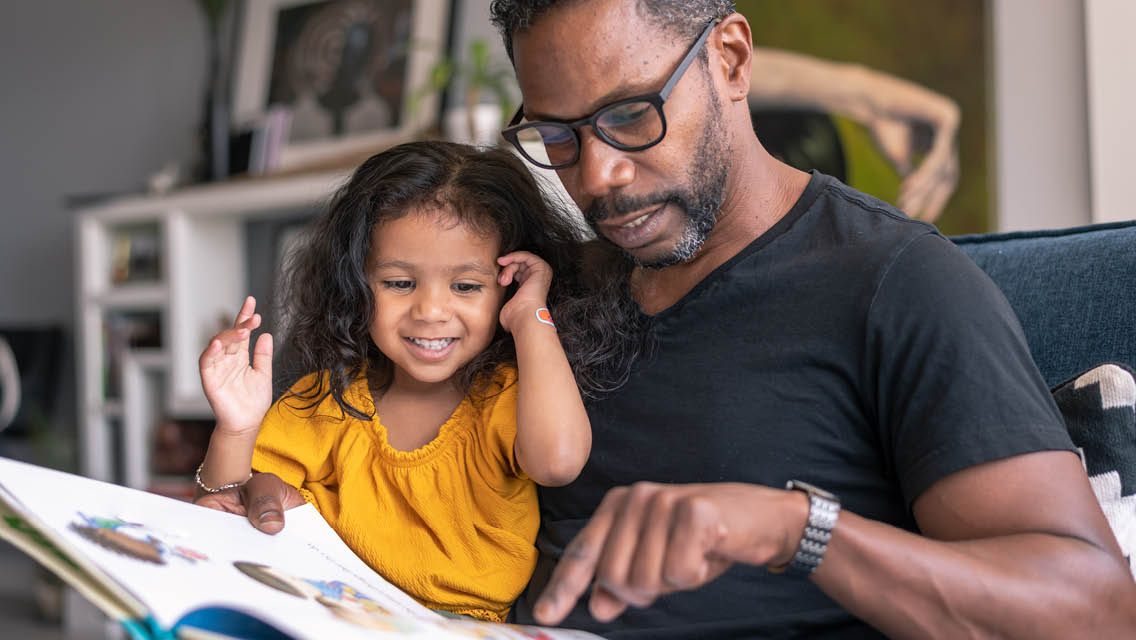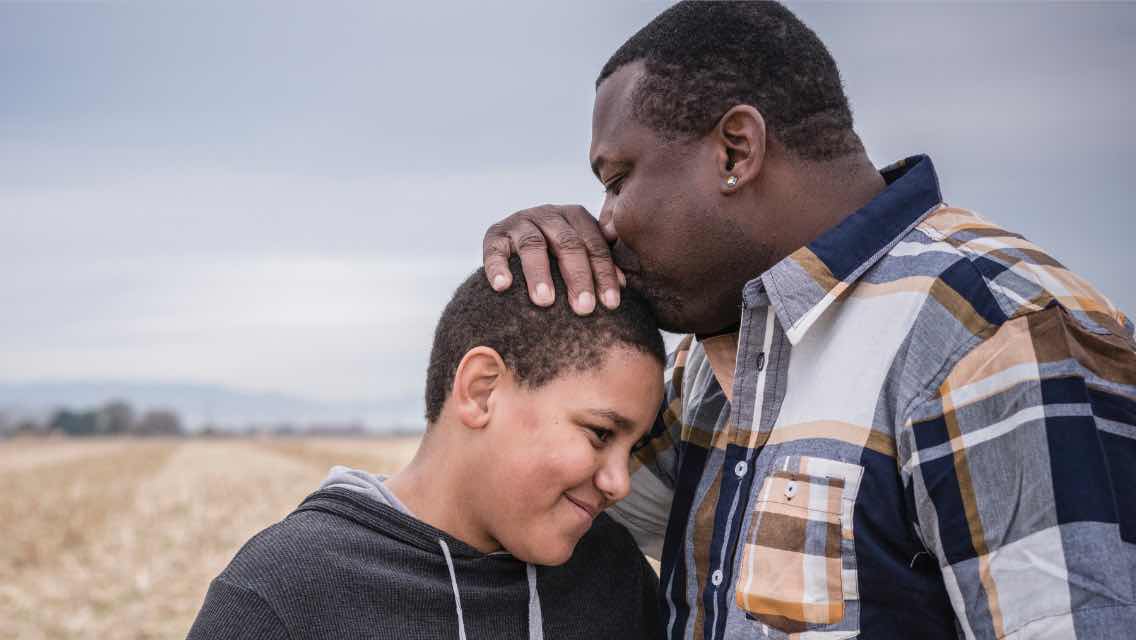Talking about sex can feel awkward, especially when talking with kids. Yet families who openly communicate about sex and relationships set their kids up to make healthier and safer choices as they grow.
And Melissa Pintor Carnagey, LBSW (who uses she/they pronouns), has good news. The sex educator and licensed social worker, parent of three, and founder of the Austin, Texas–based organization Sex Positive Families, says that The Talk as it’s traditionally understood — a big-deal one and done — needs to go. Instead, make an ongoing commitment to “creating a space that feels safe for a young person to come to us and to be curious.”
This involves real work and, notably, multiple talks over time. Carnagey has some suggestions for making these talks easier and more natural than the fearsome one with a capital T.
Stress Sources:
⋅ You feel awkward, nervous, or embarrassed. Historically, much of the messaging and communication about sex has conveyed that it’s bad, taboo, or awkward. Even if you know sex is none of those things, the discomfort is difficult to shake.
Carnagey points out that many of us did not have adults in our lives with whom we felt comfortable or safe talking about sex and relationships when we were younger, so we don’t know what that conversation looks or feels like.
⋅ You’re worried your kid will feel awkward, nervous, or embarrassed. “There’s a stereotype in our society — research shows that it’s a mistaken one — that young people don’t want to talk to their parents about sex,” Carnagey says.
⋅ You don’t know how old your child should be before you can start talking to them about sex. Will you baffle, alarm, or inappropriately “sexualize” your child if you start too early?
⋅ You don’t know how much to tell them. You might worry that your kids will be overwhelmed if you load them with information — or that you could harm them if you venture into territory you’ve been taught is “inappropriate.”
⋅ You don’t know when or how to start the conversation. The idea of announcing that you and your child are going to sit down for The Talk raises cortisol levels, doesn’t it? But if that’s not the way to get the ball rolling, what is?
Strategies for Success
⋅ Educate yourself. “Many of us didn’t grow up with any sex education, or [we grew up] with sex education that was shame- or fear-based,” says Carnagey. “It’s hard to pass on good, healthy, appropriate knowledge about sex if you didn’t receive it yourself.”
A wealth of resources can help parents find information and support, Carnagey says. Ultimately, it is not about becoming an expert or following a script; it’s simply about being open and holding safe space for your child’s curiosity. If you don’t know something, you can always tell your child you will look into it and get back to them, or you can look it up together.
⋅ Learn what’s taught in schools. Though it seems fair to assume your kids will learn about sex in school, the information they receive is likely insufficient — and could be inaccurate. Speak with your child’s teachers to find out what instruction will be provided so you can prepare to fill in the gaps and correct any misinformation.
⋅ Create a family atmosphere of openness. “The moment a child enters our world, they are getting messages about sex and relationship issues from the culture and from the values held by their family,” Carnagey says. Establishing that questions about sex are not just OK but welcome will build a foundation for easier conversations.
“If you let them know that it’s great that they’re curious and that you’re there to support them, then the door will stay open for communication and you may end up learning more about what’s going on in their world,” they add. “And that can help keep them safe.”
⋅ Call things by their names. Using euphemisms — wee-wee, flower, etc. — for the sexual organs reinforces the idea that sexuality is taboo, says Carnagey, “and that there’s something weird or wrong about it.” With young children, you can use bath time to identify these parts of the body. You can note that they may not hear other kids or families using the same language because other families may not be having conversations at the same pace.
⋅ Give up the idea that you have to cover everything at once. If you’ve established openness, your kids will be more likely to come to you with questions, Carnagey says, which you can respond to as they arise. Be honest and compassionate, and consider what is most relevant to your child when providing responses. A young child who wonders where babies come from can hear about how egg and sperm come together and the baby grows inside the mother; you can save describing the role of intercourse until they’re a little older.
⋅ Initiate conversations in a casual atmosphere. There’s a temptation to wait to discuss sex-related topics until a child asks a question about it, Carnagey notes, which sometimes leads to tweens and teens never having had important conversations about bodies, puberty, consent, or sex. Yet just as we initiate education about other subjects, like math and science, it’s important to ensure body literacy and sexual health are part of a child’s education.
To this end, Carnagey suggests starting these conversations in the context of a stress-free activity. “I recommend doing this when you’re engaged with your kid in something they enjoy,” they say, like playing with LEGOs or taking a family walk.
⋅ Use resources. “Especially with younger children, you can incorporate books that relate to topics like bodies, where babies come from, identity, or consent,” Carnagey says. “Having an age-congruent, visually engaging resource like a book to reference means you won’t feel the pressure to get all the words right.” (See the list below for a start.)
⋅ Lead with curiosity. A good way to initiate a conversation is to refer to your own past — especially if you were confused about sex. Carnagey suggests a gambit like: “You’re approaching puberty, and I barely knew what that was when I was your age. I’d really like you to be better prepared so you know what to expect. Let’s make more space to talk about it.”
You’ll build more trust if you’re honest about the aspects of sex that still puzzle you or make you nervous. A conversation like that may lead you and your kid to a book or to a video you can learn from together.
⋅ Teach boundaries. One of the pernicious myths about sex-positive parenting is that it’s about teaching children how to have sex. “But that’s not relevant to children,” Carnagey says. “Children’s questions aren’t often about the mechanics of sex. One of the key things to convey to children is that sex is an activity that adults and some older teens who feel ready can do — sometimes for pleasure, sometimes to make babies. It’s not something children do because children can’t consent to sex. This is a boundary that is related to emotional and physical maturity, and children understand boundaries like this. For example, they understand that at 10, they’re not going to drive a car.”
As part of this understanding, kids should know that they can and should set boundaries when it comes to their bodies. If they don’t want to be tickled, that boundary will be respected. If they don’t want an adult — even a relative — to hug or kiss them, that’s all right too.
⋅ Encourage authenticity and acceptance. Most children have a sense of their gender identity by age 4. Early on, give children permission to express themselves authentically. As they grow older, let them know that gender isn’t binary, and that a person’s gender identity and expression don’t need to align with norms associated with the gender they were born into.
Kids should know that sexual orientation is similarly fluid. You might tell them that some people fall in love with people of a different gender from their own and that some people fall in love with people of the same gender. This will help them realize that not all families look like theirs but that all families are just as valid.
“And the crucial thing in helping them understand all of that,” says Carnagey, “is making sure that you really believe it yourself.”
Educational Resources
These resources can help set the stage for healthy, open communication about sex and relationships.
- Amaze.org: Lively animated videos provide high-quality, medically accurate information.
- Everybodycurious.com: Leading sex educators answer kids’ questions about sexuality and healthy relationships in a video series geared toward viewers ages 9 to 12.
- Sexpositivefamilies.com: Shame-free, comprehensive, and pleasure-positive sexual-health resources.
- Sex Positive Talks to Have With Kids, by Melissa Pintor Carnagey, LBSW
- Girls & Sex and Boys & Sex, by Peggy Orenstein
- Celebrate Your Body (And Its Changes, Too!) by Sonya Renee Taylor
- It’s Perfectly Normal: Changing Bodies, Growing Up, Sex, Gender, and Sexual Health by Robie H. Harris, illustrated by Michael Emberley






This Post Has 0 Comments